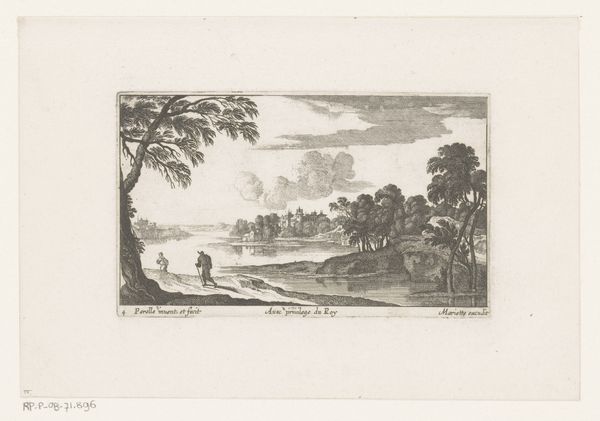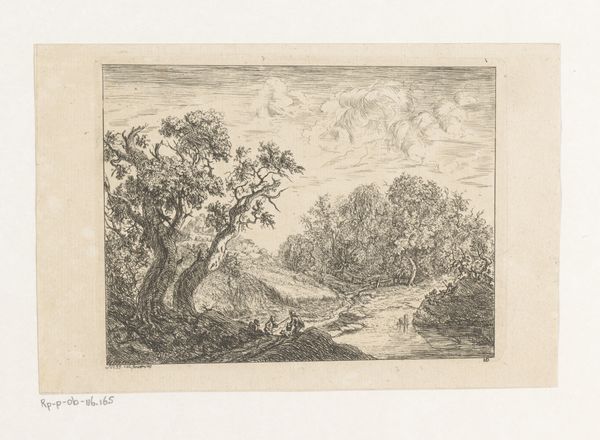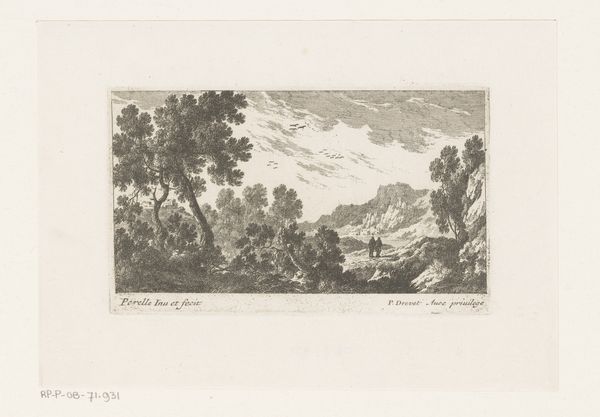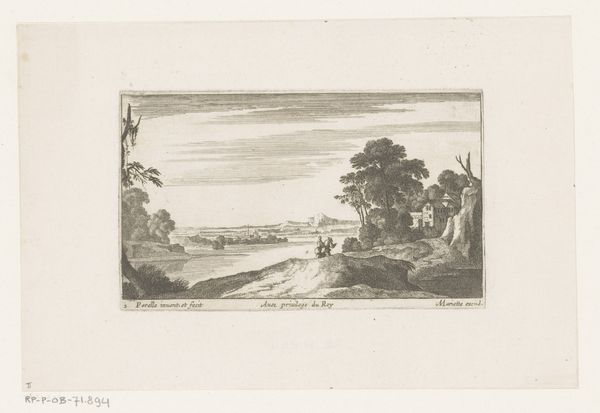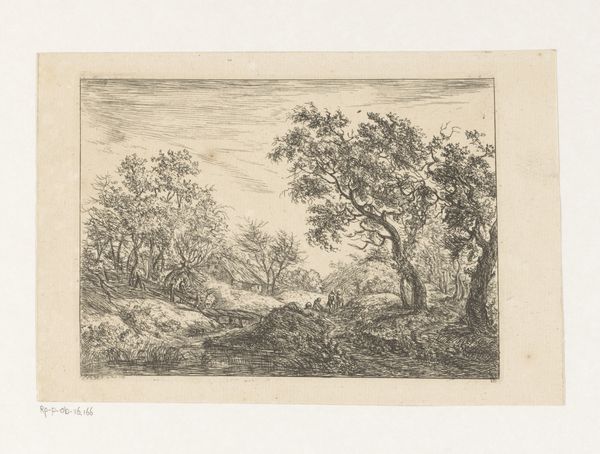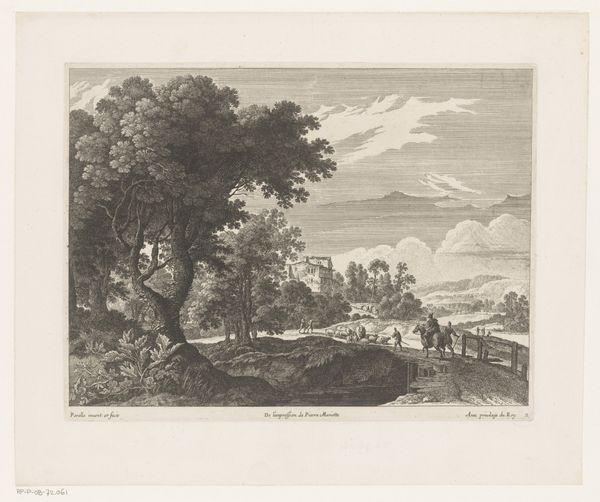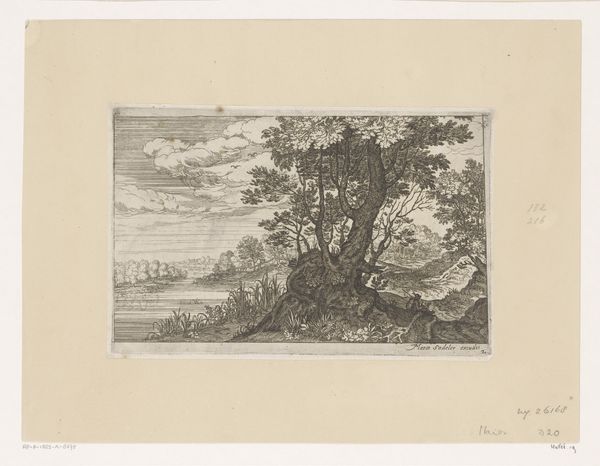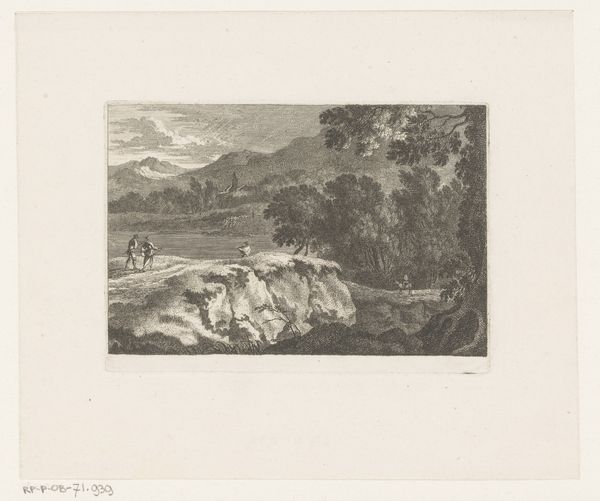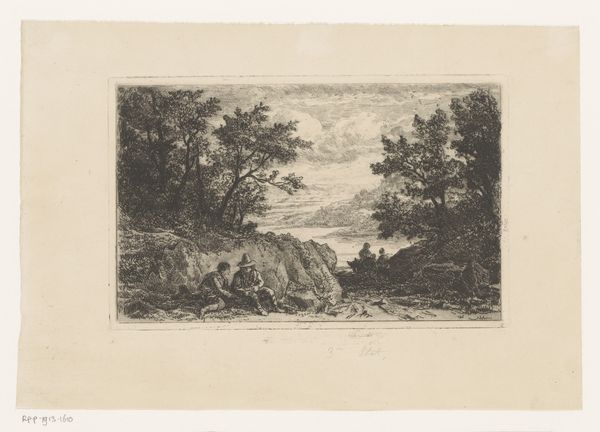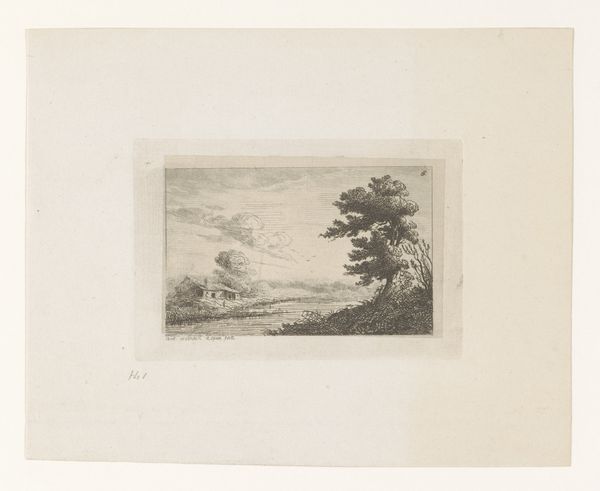
print, paper, engraving
#
baroque
#
ink paper printed
# print
#
old engraving style
#
landscape
#
white palette
#
paper
#
engraving
Dimensions: height 99 mm, width 163 mm
Copyright: Rijks Museum: Open Domain
Curator: Looking at this print, titled "River Landscape with Trees", created sometime between 1613 and 1695, attributed to Nicolas Perelle, I’m struck by how immediate it feels despite its age. Editor: Yes, it feels so open. I’m immediately drawn to the subtle gradation of light, the way the silhouetted trees in the foreground give way to the bright sky. There's an interesting balance, creating a sense of depth that’s quite captivating. Curator: Absolutely. Perelle was clearly skilled in the art of engraving. Prints like this, made with ink on paper, were crucial in disseminating landscape imagery widely, creating a visual language that shaped perceptions of the natural world. What visual codes or concepts seem notable? Editor: Well, that lone figure, walking along the riverbank, he's small but pivotal. The individual is traveling near monumental architecture on the opposite shore. Landscape here is not empty but full of past presence, connecting humanity with a rich history, right? The trees offer their protective presence as much as the stone. Curator: Exactly. Landscape imagery was very powerful. Consider how images like these informed not only the taste of the expanding urban elite, but were part of a complex interplay of burgeoning tourism and the rise of modern ideas about nature and its relation to national identity. It evokes, almost, a prelapsarian relationship between man and environment. Editor: And it carries forward an almost eternal connection with nature. These prints made landscape accessible in an immediate way and, by capturing the nuances of light and shadow, helped establish cultural memory in the making. Curator: Indeed, and for a longer view into our contemporary times too. The ability of landscape to capture specific eras, whether intended or not, shows us not just physical places but time capsules that still inform us today. Editor: A lovely, brief look, illuminating our relationship with landscapes—and history.
Comments
No comments
Be the first to comment and join the conversation on the ultimate creative platform.
